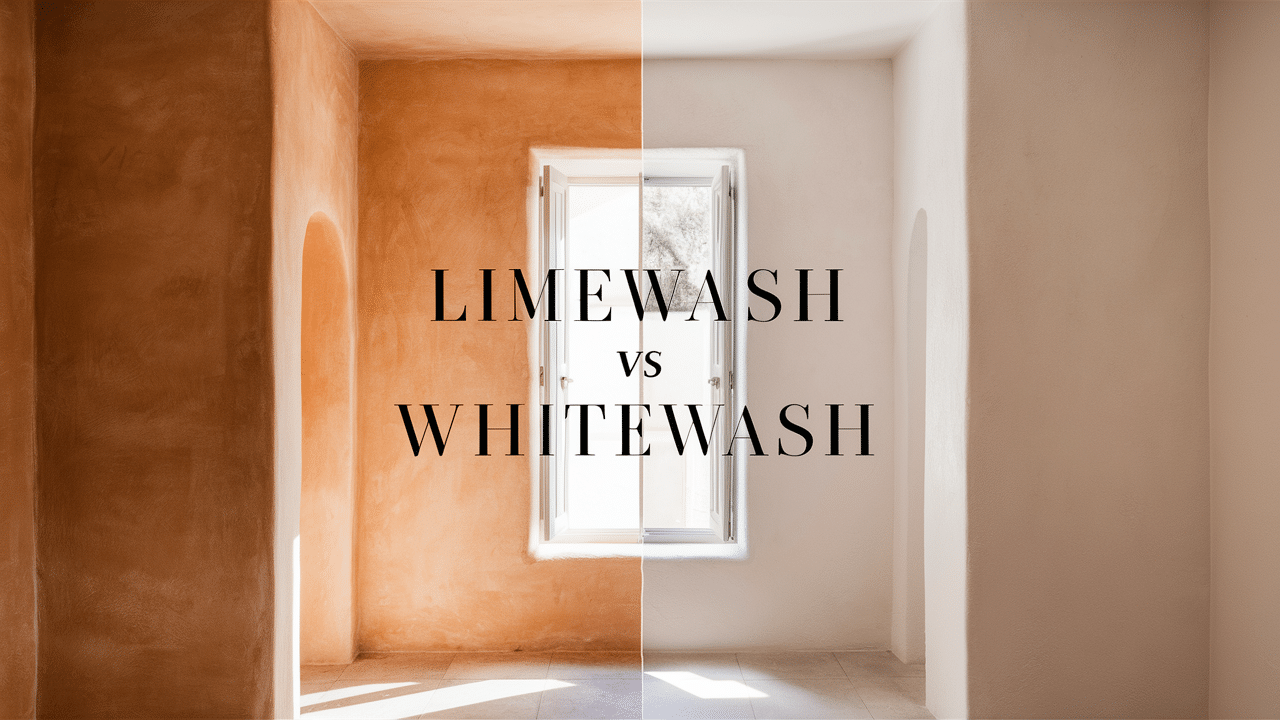Choosing the right finish for your interior walls can be tricky, especially when it comes to limewash vs. whitewash. Both offer unique looks, but many people confuse the two. They might seem similar, but there are key differences in how they work, how they look, and which one lasts longer.
In this blog, we’ll discuss those differences. I’ll explain the pros and cons of each so you can decide which is best for your home.
If you’ve been wondering which option fits your style and needs, you’re in the right place. My goal is to help you make an informed choice and solve the problem of picking the perfect finish.
I’ve got your back with straightforward advice based on years of experience. Let’s get started!
What is Limewash?
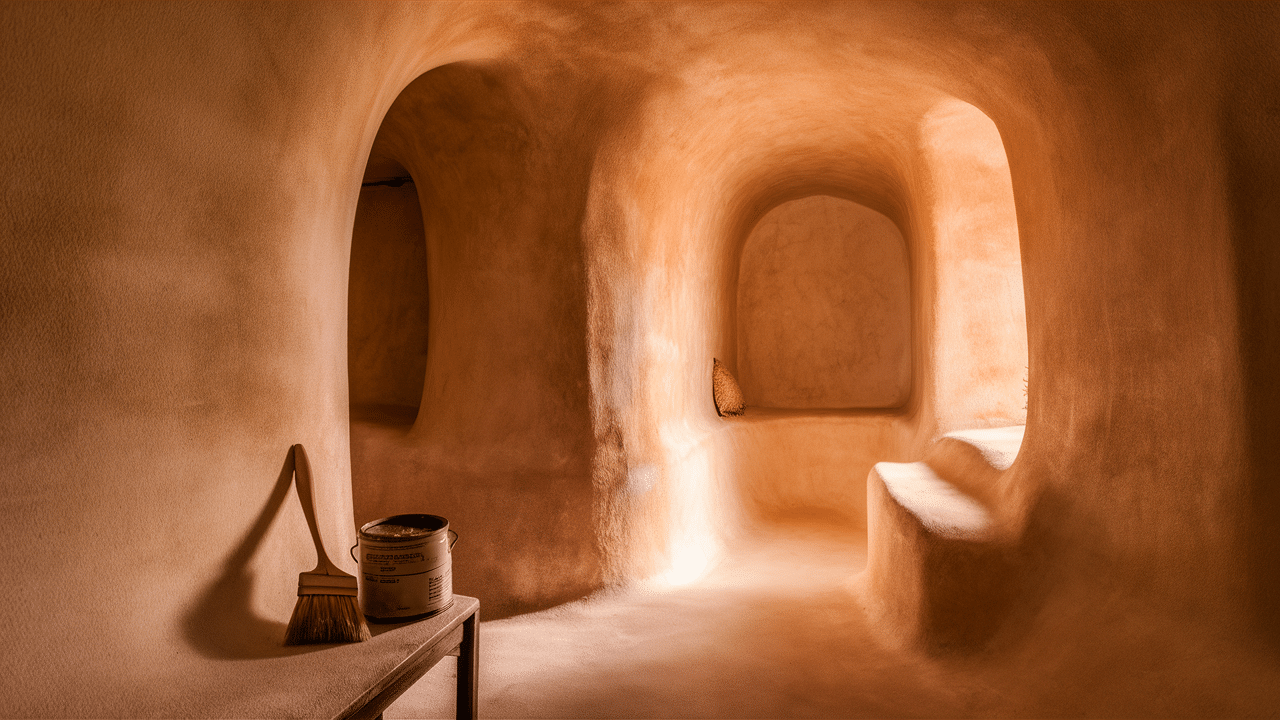
Limewash is a natural paint made from lime and water. It’s been used for centuries, especially in older buildings. People love it because it’s breathable and can protect walls from moisture.
Limewash was once used to paint walls and ceilings. It was common in homes, churches, and even castles!
Here’s what you need to know:
- Ingredients: It’s made from slaked lime (a type of lime that’s been mixed with water) and water. Sometimes, pigments are added for color.
- How it’s applied: Limewash is usually brushed onto walls in thin layers. You’ll need a few coats to get the right finish. It dries to a soft, matte look, giving walls an old-world charm.
If you want a natural, breathable finish for your walls, limewash is a great choice.
What is Whitewash?

Whitewash is another type of wall finish, but it’s a bit different from limewash. It’s made from lime and chalk or other fillers, like clay, and mixed with water to create a thin, watery solution.
Historically, whitewash has been used in homes and barns. It was a cheap way to protect walls, especially in rural areas. Over the years, it became known for its bright, clean look.
Here’s what you should know:
- Ingredients: Whitewash is made of lime, chalk or other fillers, and water. Sometimes, it also includes salt.
- How it’s applied: Like limewash, whitewash is applied with a brush. You’ll want to use it in thin coats. It gives a chalky, bright white finish.
Whitewash is perfect for a quick, simple update, but it doesn’t last as long as limewash.
Key Differences Between Limewash and Whitewash
Limewash and whitewash may seem similar, but they’re actually quite different. Let’s break it down:
1. Composition
- Limewash is made from lime and water. It’s a simple, natural formula.
- Whitewash, on the other hand, uses lime but also adds chalk or other fillers, like clay. This makes it thicker and a bit more textured.
2. Appearance
- Limewash has a soft, matte finish and a natural, slightly uneven texture that adds depth to walls.
- Whitewash creates a smooth, brighter finish. It’s more chalky and can look a little flat.
3. Durability
- Limewash lasts much longer than whitewash. It’s known for resisting fading and being less likely to peel.
- Whitewash is less durable. It can fade over time, especially in high-moisture areas.
4. Breathability
- Limewash is highly breathable. This makes it great for older buildings with moisture issues. It helps keep the walls dry.
- Whitewash isn’t as breathable, which could lead to moisture problems if applied to the wrong surfaces.
5. Environmental Impact
- Both are eco-friendly, but limewash is often considered the greener option because it’s made from natural materials and uses fewer chemicals.
- Whitewash is also good for the environment but may include fillers or additives that aren’t as natural.
Comparison Table
| Feature | Limewash | Whitewash |
|---|---|---|
| Composition | Lime + water | Lime + chalk/other fillers + water |
| Appearance | Soft, matte, slightly textured | Smooth, bright, chalky finish |
| Durability | Long-lasting; resists fading and peeling | Less durable, fades and peels over time |
| Breathability | Highly breathable, great for old buildings | Less breathable, can cause moisture issues |
| Environmental Impact | More eco-friendly, natural ingredients | Eco-friendly, but may include non-natural fillers |
I hope this clears up the differences between limewash and whitewash! Each has its benefits, but it depends on what you need for your space.
Pros and Cons of Limewash for Interior Walls
Limewash is a great option for interior walls, but like anything, it has its pros and cons. Let’s look at what makes it a good choice—and what might hold you back.
Benefits of Limewash
- Natural Look: Limewash gives a soft, matte finish that adds charm to any room.
- Breathable: It allows walls to “breathe,” which helps with moisture and prevents mold.
- Antimicrobial: It has natural antimicrobial properties, making it great for homes in humid climates.
- Eco-Friendly: Made from natural materials, limewash is a green option for those who want to reduce their environmental impact.
- Durable: Limewash is known for its long-lasting finish that resists fading and peeling.
Potential Downsides of Limewash
- More Expensive: Limewash can be pricier than whitewash or regular paint.
- Requires Multiple Coats: To get a perfect finish, you might need to apply several coats.
- Can Be Messy: The application process can be a little messy, so be ready to protect your floors and furniture.
- Limited Color Options: While limewash is available in some colors, the range is narrower than standard paints.
Limewash Pros and Cons Table
| Pros | Cons |
|---|---|
| Natural look | More expensive |
| Breathable | Requires multiple coats |
| Antimicrobial properties | Can be messy to apply |
| Eco-friendly | Limited color options |
| Durable | May require maintenance over time |
In the end, limewash is a great choice if you want something natural and durable. Just remember the extra cost and effort it takes to apply it!
Pros and Cons of Whitewash for Interior Walls
Whitewash can be a solid choice for your interior walls. Let’s go over the pros and cons so you can decide if it’s right for you.
Benefits of Whitewash
- Cost-Effective: Whitewash is typically much cheaper than limewash or regular paint.
- Easy to Apply: It’s simple to apply and doesn’t require much preparation.
- Quick Drying: Whitewash dries faster than other wall finishes, so you can get the job done quickly.
- Brightens Spaces: It gives walls a clean, bright appearance, making rooms feel more open.
- Simple Look: If you want a minimalistic, classic style, whitewash is perfect.
Potential Downsides of Whitewash
- Less Breathable: Whitewash is not as breathable as limewash, which can lead to moisture issues.
- Can Fade or Yellow: Over time, whitewash can start to fade or take on a yellowish tint, especially in areas with a lot of sunlight.
- Not Very Durable: Whitewash doesn’t hold up as well as limewash. It may chip or peel faster.
- Limited Texture: It doesn’t have the same depth or texture that limewash provides.
Whitewash Pros and Cons Table
| Pros | Cons |
|---|---|
| Cost-effective | Less breathable |
| Easy to apply | Can fade or turn yellow over time |
| Quick drying | Not very durable |
| Brightens spaces | Limited texture and depth |
| Simple, classic look | Lacks visual depth or texture |
Whitewash is great if you need an affordable, quick fix. However, it might not last as long as you’d like.
Which Is Better for Your Home?
So, which one is the right choice for your home: limewash or whitewash?
Let’s break it down based on a few important factors.
Budget

- Whitewash is more affordable. If you’re on a tight budget, it’s a great choice for updating your walls without spending a lot.
- While more expensive, limewash offers a longer-lasting, natural finish. It’s an investment that might save you money on touch-ups down the road.
Aesthetic Preferences
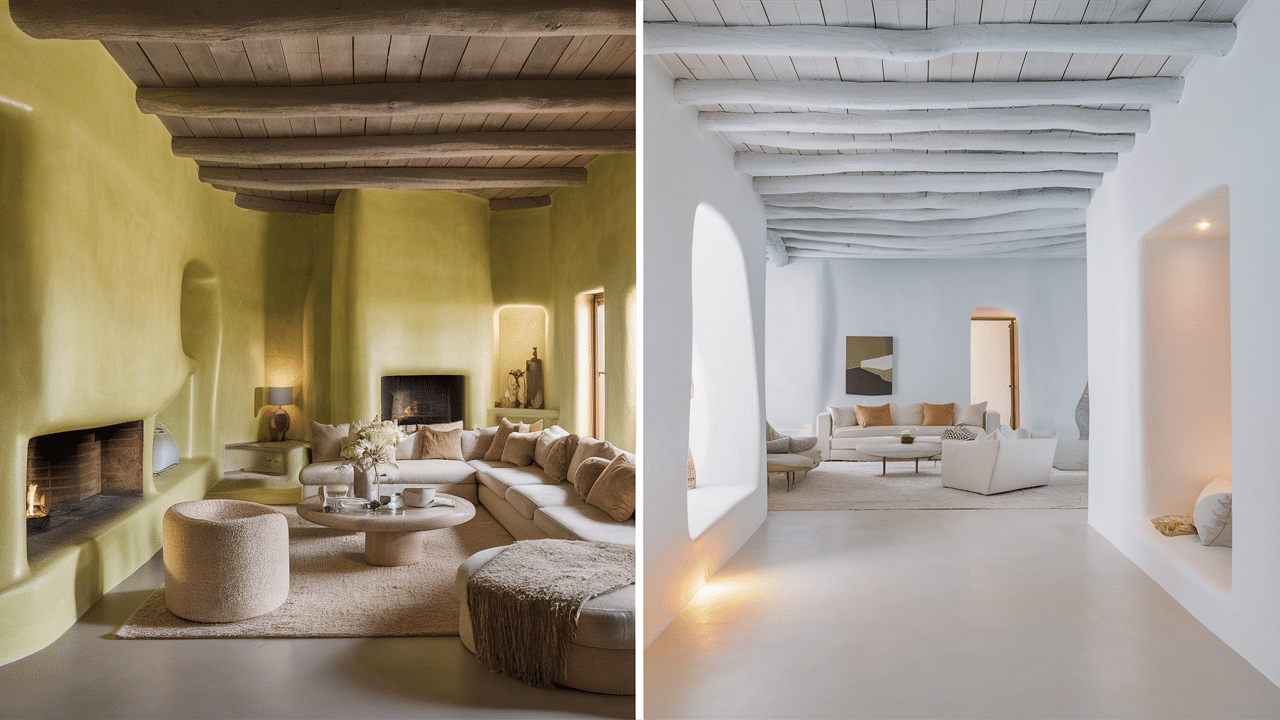
- If you want a soft, matte look that adds depth and character, limewash is the way to go. It has a more traditional, rustic feel.
- Whitewash gives a clean, bright finish. It’s ideal if you want a minimalist or fresh look, but it can feel a bit flat compared to limewash.
Type of Home
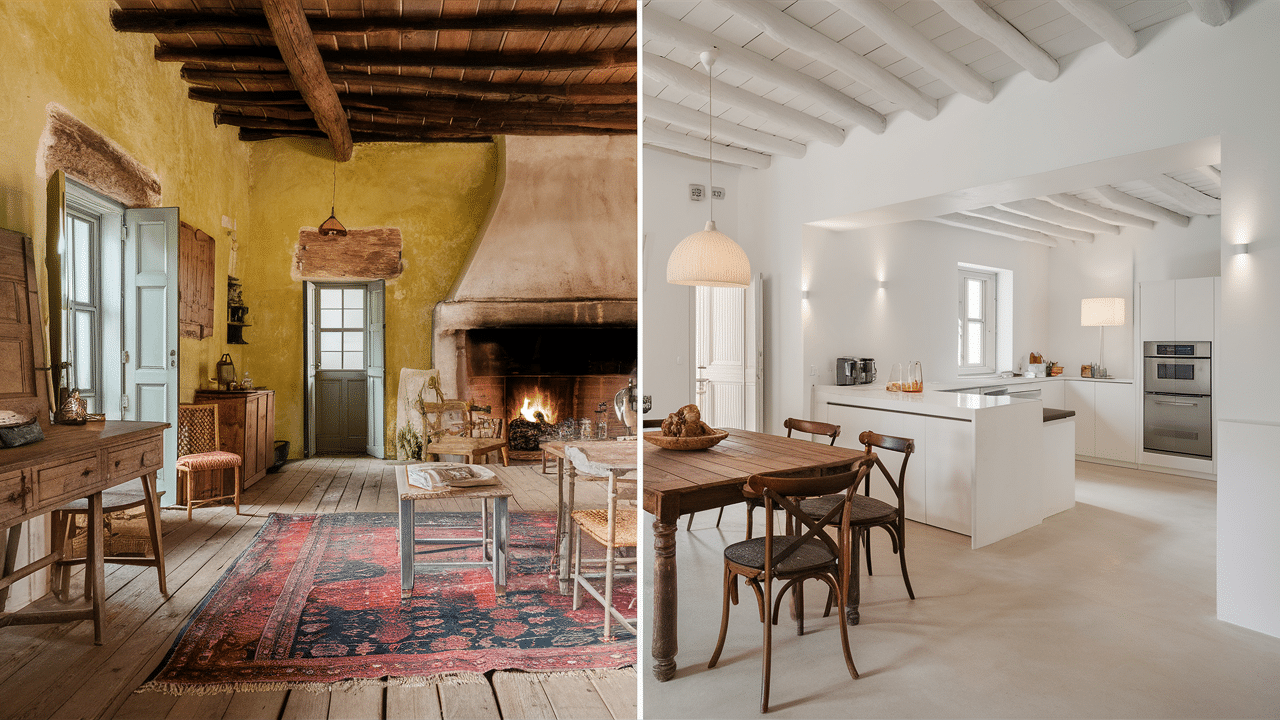
- Limewash is perfect for older homes or buildings with moisture issues. Its breathability helps keep things dry and prevents mold.
- If you have a more modern or straightforward space, whitewash can do the job. It’s simple and quick, and it’ll give your walls a fresh look.
Durability

- Limewash lasts longer and holds up better over time, especially in high-moisture areas.
- Whitewash may fade or peel more quickly, especially in areas with a lot of sunlight.
Tips for Applying Limewash and Whitewash
Applying limewash or whitewash to your walls is easier than you might think, but there are a few things to keep in mind. Here’s a step-by-step guide for both methods, along with some common mistakes to avoid.
How to Apply Limewash
1. Prep Your Walls

Clean the surface thoroughly. Make sure the walls are free of dust, dirt, and grease. Any debris can interfere with the limewash’s ability to adhere properly. If your walls have old paint or coatings, remove them to ensure the limewash goes on smoothly.
2. Mix the Limewash
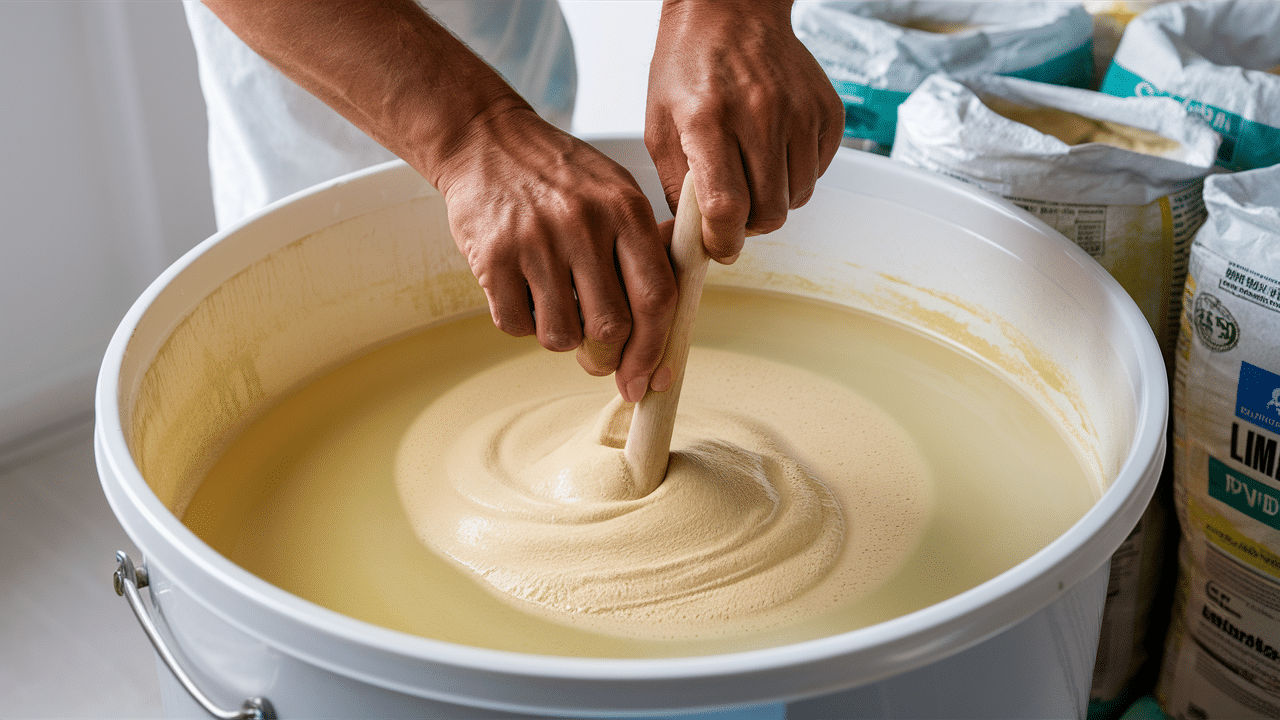
Follow the instructions provided with the limewash product. Typically, you’ll need to mix the limewash powder with water to achieve a thin, smooth consistency. Make sure there are no lumps, as this could cause uneven coverage.
3. Apply the First Coat

Use a large, flat brush to apply the limewash in thin layers. Start in a small section of the wall and work in small strokes. Be mindful to keep the coat thin, as applying too thick will lead to streaks and uneven coverage. You can vary your brushstrokes if you’re looking for a more textured look.
4. Let it dry
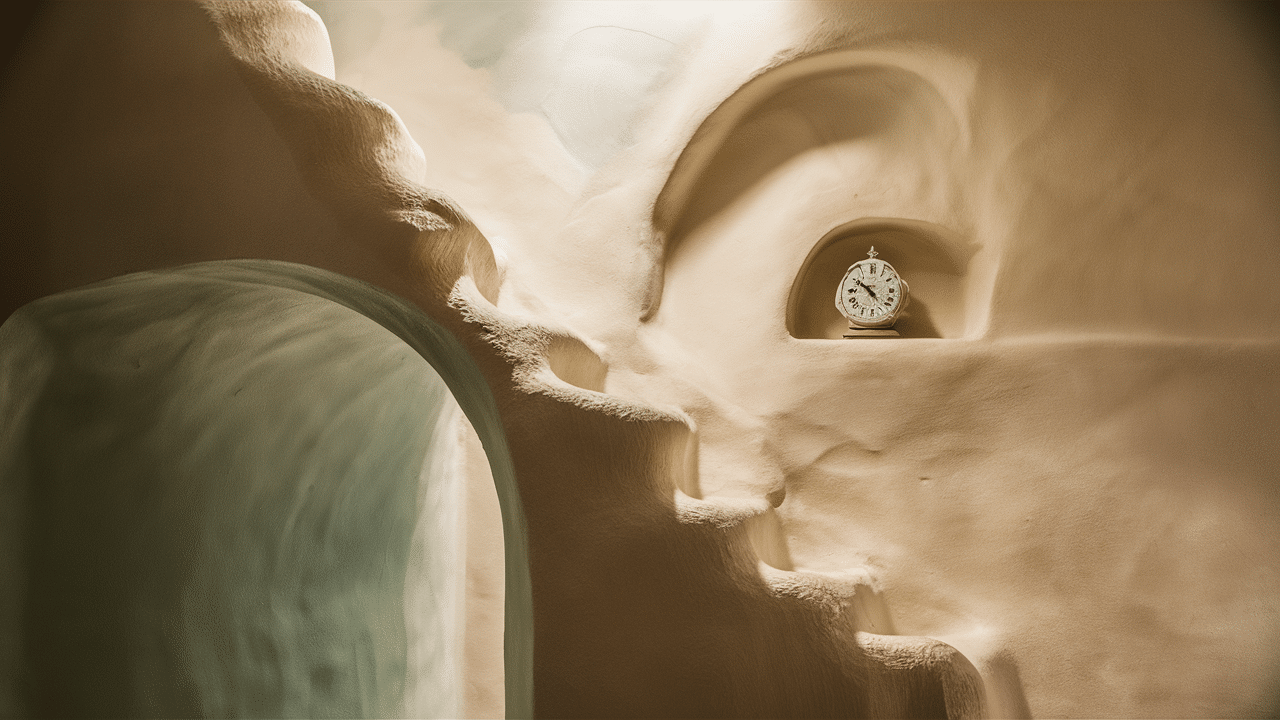
Allow the first coat to dry fully before applying a second coat. Limewash can take anywhere from a few hours to overnight to dry completely, depending on humidity and temperature. It’s important to let each coat dry before adding another, or you may risk disturbing the finish.
5. Apply Additional Coats
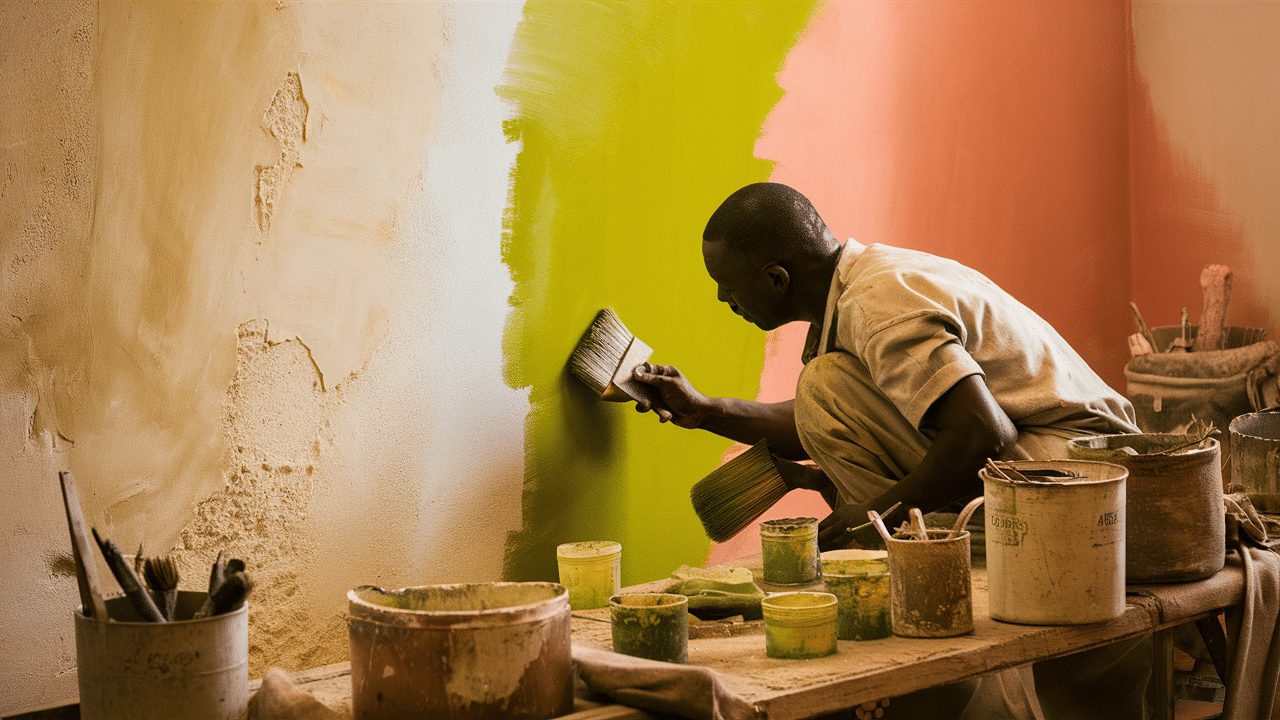
For a rich, full coverage, apply 2-3 coats of limewash. After each coat dries, check the finish. If the color is uneven or too light, add another layer. Be sure each coat is completely dry before you begin the next.
Following these steps will ensure a beautifully applied finish, whether you choose limewash or whitewash for your interior walls.
Conclusion
In this article, we’ve explored the key differences between limewash and whitewash for your interior walls. I’ve walked you through the pros and cons of each, helping you decide which finish fits your needs. Whether it’s your budget, your home’s style, or how long you want the finish to last, there’s an option for you.
Remember, limewash is great for a more durable, natural finish, while whitewash is budget-friendly and simple to apply. Take your time to consider what works best for your space.
Frequently Asked Questions
Can I Use Limewash or Whitewash on Exterior Walls?
Yes, both can be used on exterior walls. Limewash is especially good for older homes, while whitewash is better for a more budget-friendly, quick solution.
How Long Does Limewash Last?
Limewash can last 5-7 years or more, depending on exposure to elements. With proper application, it’s highly durable and resistant to fading or peeling.
Is Whitewash Safe for All Types of Walls?
Whitewash works well on most wall surfaces, but it’s ideal for bare brick, stone, or drywall. Avoid applying it on sensitive or painted surfaces without prepping them first.
Can I Change the Color of Limewash or Whitewash?
Yes, you can add natural pigments to both limewash and whitewash to create different shades. However, limewash generally offers more flexibility with color variations.
Does Lime Wash Require Special Maintenance?
Limewash is relatively low-maintenance but might need a touch-up after a few years, especially in high-traffic or moist areas. Just keep the surface clean.

